Text
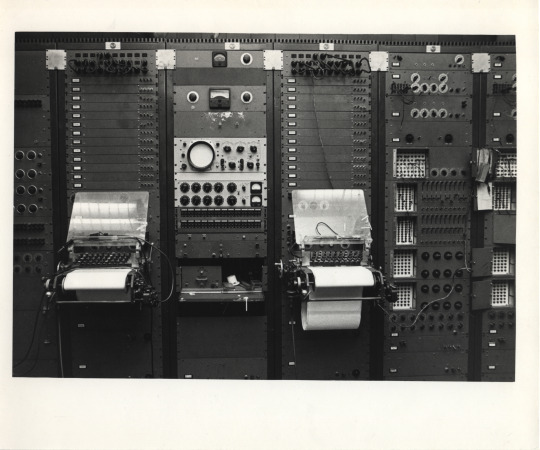



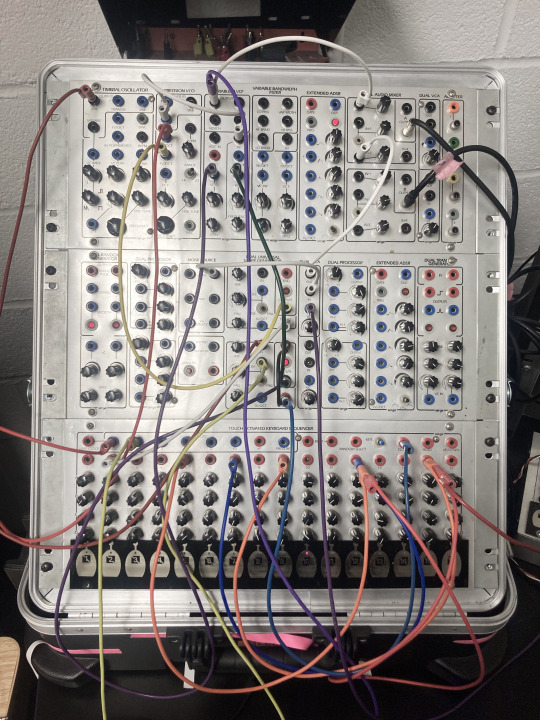
State Music — Residency at Columbia University / Computer Music Center
I spent five weeks in NYC between March and April 2023. It was a fantastic opportunity to work at the Computer Music Center in New York. The CMC is the first electronic music studio in the USA and Seth Cluett was kind enough to let me continue my research in the best conditions.
During this stay I was able to compose two new pieces for my forthcoming debut album State Music. The first was recorded in Studio 324 on two very early versions of Buchla and Serge analogue modular systems and two Bode frequency shifters. The process was similar to what I had done at EMS Stockholm, Radio Belgrade, KSYME Athens and Willem Twee Studio in Den Bosch. I tried to adapt to the machines installed in the studio, tested a lot of patches and recorded many hours of textures, accidents and other sonic events using a variety of techniques. The editing, collaging, layering and mixing was done later in my studio. I just followed one rule. Don't use the same recording twice. No loops, nothing like that.
The second composition was recorded in Jace Clayton's office. Why? Because the RCA Mark II, considered one of the first music synthesizers ever, still sits in that room. The synth has been out of order since 1976, when someone broke into the Prentis Hall building and vandalised the machine. But I decided to make use of it anyway. I opened one of the office windows to let sounds from the city into the room and recorded the tiny vibrations caused by street noise with a geophone magnetised to the synthesizer. In this way the synthesiser essentially acted as a loudspeaker. A cheap recorder was placed near the window. Two wide cardioid microphones were placed in the middle of the room for a high quality recording. Most of the time I sit in front of the synthesizer and do nothing but listen, and every now and then I flip a switch, turn a potentiometer or unplug a patch cable to activate the acoustic space of the office and make the metal frame of the machine vibrate.
It was an amazing moment. I've been working on the State Music project since 2018. I realised that being in that room with that silent machine felt like achieving something. My understanding of electronic music history is much deeper. The links between early synthesizers and the military industry are now much clearer to me. State music? Corporate music? I don't know and it doesn't matter.
Here's an anecdote from The Enabling Instrument: Milton Babbitt and the RCA Synthesizer" a paper by Martin Brody.
When the Mark-I appeared in 1955, it was listed in the RCA Acoustics Laboratory inventory with a proud comparison: The synthesiser was 'second only to the Typhoon rocket simulator as the largest single assembly to come out of the David Sarnoff Research Center'. [Although the Mark-I was built to recreate a peaceful expression of human subjectivity rather than to obliterate a hostile and remote man-machine, its input/output components were as indifferent to the workings of the psyche as an anti-aircraft predictor.As Harry Olson recalled, to test their new machine, Olson and Belar followed Seashore's playbook of analysing past performances. The goal was not to expose the musical mind, but to simulate the sounds of acoustic instruments and human performers with the utmost precision.
I would like to thank Seth Cluett, Anna Meadors, Jace Clayton and Nick Patterson for their help.
#large#RCA#STS Serge synthesizer#Buchla 100#RCA Mark II#Victor#Computer music center#Seth Cluett#Martin Brody#Milton Babbit#Vladimir Ussachevsky
4 notes
·
View notes
Text
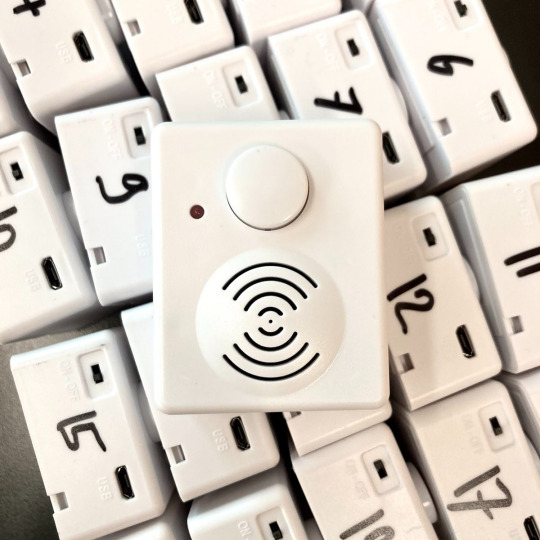
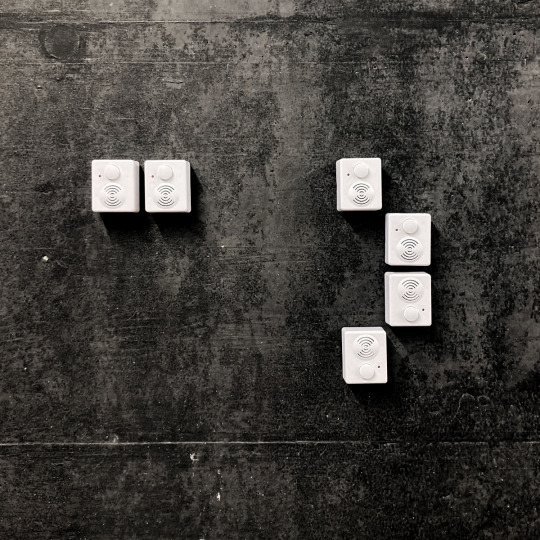
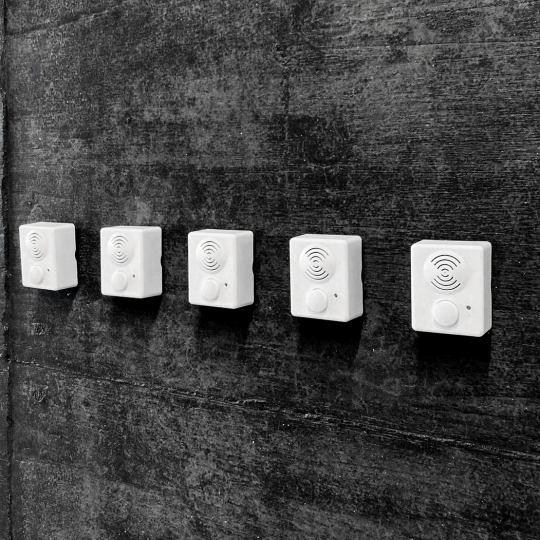

Sonnettes, entre espaces publics et privés - Doorbells, between public and private spaces
Doorbells, between public and private spaces
The organisers of "Les Voix de la Ville" and the Lausanne-based association "les Topophoniques" invited me to collaborate with the Maison de Quartier de Chailly to create a sound work.
For this project, I was interested in the doorbell as an interface between public and private spaces, but also as a technological and political apparatus. I noticed that the Maison de Quartier didn't have a doorbell, which is quite logical, given that the building is generally open when activities get going. The community centre itself is a public space in which one can feel at home.
My installation consists of 50 false doorbells. They are distributed around the building and divided into different categories. To play an mp3 file, the audience has to press the button on one of the fake bells. The installation forms a visit that begins with a typology of bell sounds and recordings of intercoms transmitting the sound of a street.
I then conducted a series of interviews with users of the Maison de Quartier de Chailly to find out what their relationship was with their doorbell. What did they think of the sound? But also what's the procedure for a visitor to enter their home? The answers were surprisingly varied and revealing. You can listen to people's answers by pressing different doorbells.
As the Maison de Quartier de Chailly doesn't have a doorbell, I contacted Koch AG, a company based in the canton of Zurich. It was this company that fitted my apartment with an intercom system. When I visited their website, I realised that Koch AG is more than just a company that sells doorbells. It's a surveillance company. They sell cameras, connected and smart doorbells and much more.
So I contacted a company representative for a quote and advice on the equipment for the Maison de Quartier de Chailly, which of course had no intention of buying a doorbell, much less a video surveillance system. I recorded our conversation and we discussed all the problems associated with the simple gesture of opening a door.
In the last part of the tour, I give a verbal description of the different stages of evolution of the doorbell. From their pneumatic prehistory in the 19th century to "Ring", a company owned by Amazon that supplies doorbells that are actually video surveillance systems connected to smartphones and ultra-local social networks where images of supposedly suspicious behaviour are shared. Doorbells now collect private data to sell it and keep filming public and private spaces and share videos on hyperlocal social networks such as "Neighbors". This causes many problems.
According to Wikipedia, "Neighbors" has been criticised for its partnerships with law enforcement agencies. The Electronic Frontier Foundation said that apps like Neighbors "facilitate the reporting of so-called 'suspicious' behaviour that actually amounts to racial profiling". Fight for the Future has described Ring and Neighbors as a private surveillance network supported by law enforcement partnerships that "undermine our democratic process and basic civil liberties".
0 notes
Audio
Listen/purchase: Music for electronic consumers & consumer electronics by Laurent Güdel & Francisco Meirino
Self-published physical edition of 30 copies, sold out. Limited physical copy distributed on a lithium battery chargeable USB MP3 circuit board with sound chip and speaker. Made in Shenzhen, China.
Recorded at La Becque in 2019.
Laurent Güdel: electronics, artwork
Francisco Meirino: electronics, mastering
Mixed and edited by LG&FM 2021-2022
#bandcamp#large#modular synth#electronic music#Electroacoustic#musique concrete#francisco meirino#laurent güdel
1 note
·
View note
Photo
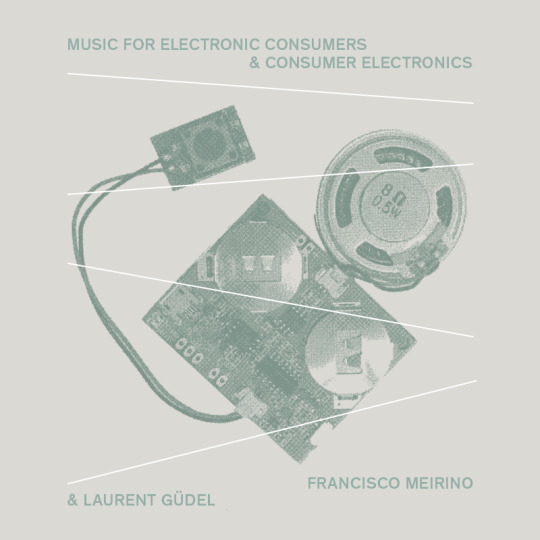
Music for electronic consumers & consumer electronics
by Laurent Güdel & Francisco Meirino.
Listen and buy the digital edition on Bandcamp. Self-published physical edition of 30 copies, sold out. Limited physical copy distributed on a lithium battery chargeable USB MP3 circuit board with sound chip and speaker. Made in Shenzhen, China.
Laurent Güdel: electronics, artwork
Francisco Meirino: electronics, mastering
Mixed and edited by LG&FM 2021-2022
0 notes
Photo
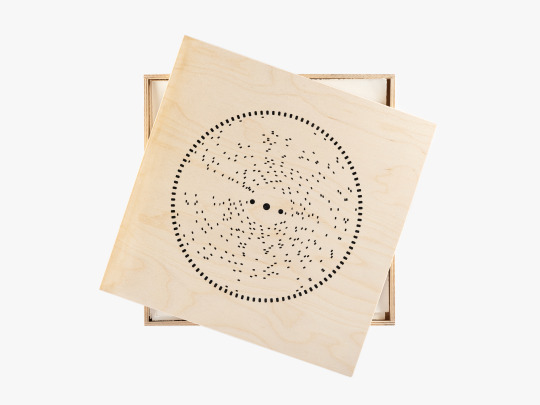
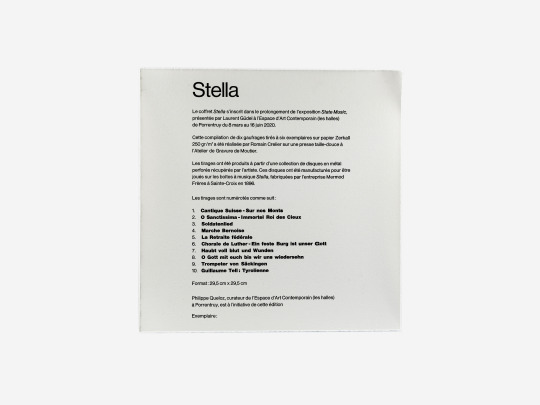

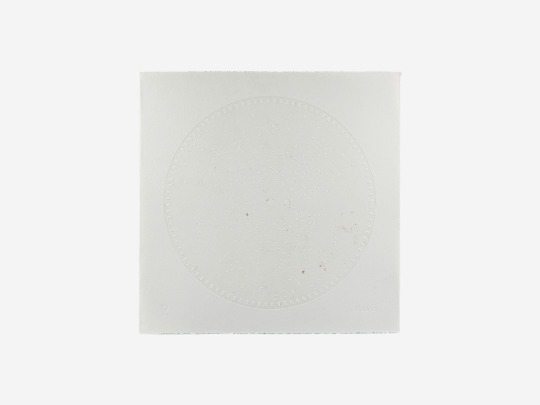


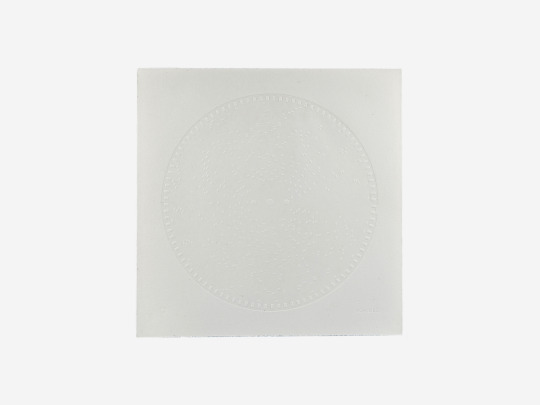



Stella
The Stella boxed set is an extension of the State Music exhibition presented at the Espace d'Art Contemporain ( les halles ) in Porrentruy from March 8 to June 16, 2020.
This compilation of ten embossings printed in six copies on Zerkall 250 gr/m 2 paper was realized by Romain Crelier on an intaglio press at the Atelier de Gravure in Moutier.
The prints were produced from a collection of perforated metal discs recovered by the artist. These discs were originally created to be played on the Stella music boxes, manufactured by the company Mermod Frères in Sainte-Croix in 1896.
The prints are numbered as follows:
1. Cantique Suisse - Sur nos monts
2. O Sanctissima - Immortal King of Heaven
3. Soldatenlied
4. Bernese March
5. The Federal Retreat
6. Luther Choir - Ein feste Burg ist unser Gott
7. Haubt voll Blut und Wunden
8. Gott mit euch bis wir uns wiedersehn
9. Trumpeter von Säckingen
10. William Tell: Tyrolean
Format: 29,5 cm x 29,5 cm
Philippe Queloz, curator of the Espace d'Art Contemporain ( les halles ) in Porrentruy, is at the initiative of this edition.
Copy N' ..../6
Pictures by: Thalles Piaget
1 note
·
View note
Photo

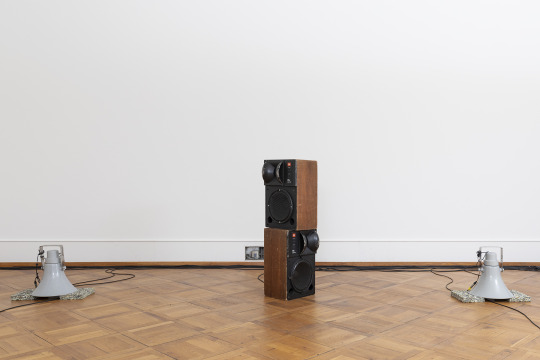
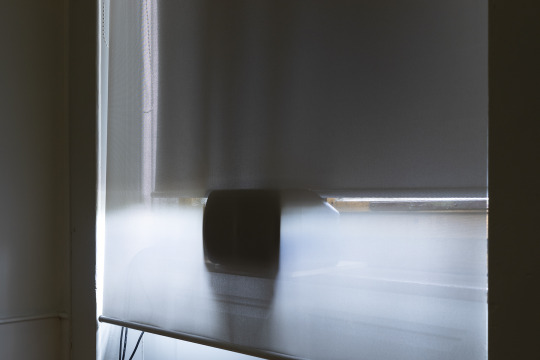


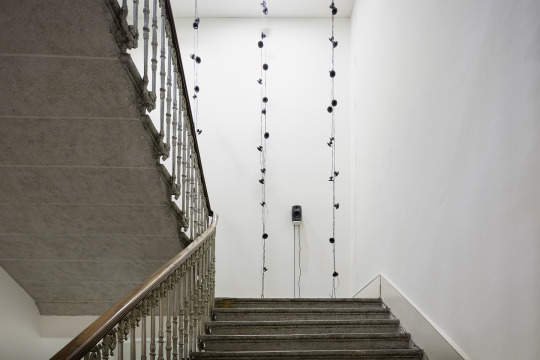
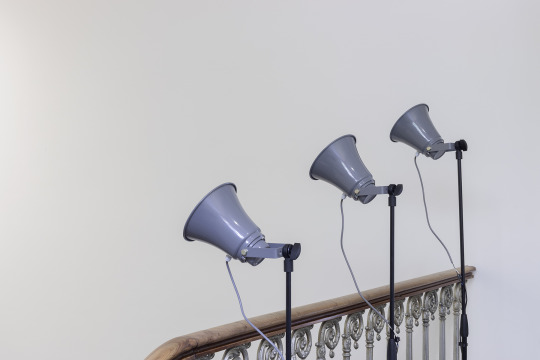
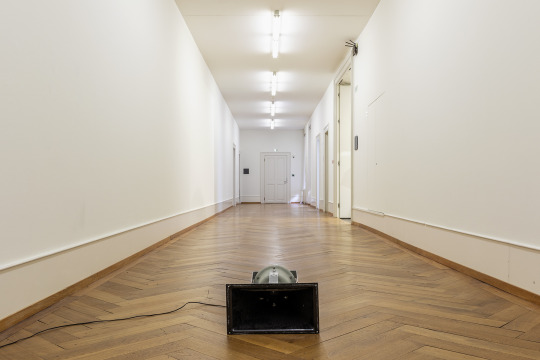
SOLO / MUTE / PAN
OLGA KOKCHAROVA, LAURENT GÜDEL & GUESTS
18.9.-20.11.2022
SOLO / MUTE / PAN is a collaborative exhibition project that brings together for the first time Olga Kokcharova (*1985, CH / RU, Geneva) and Laurent Güdel (*1984, CH, Biel), two sound artists whose common ground is their work with listening and sound spatialization. Using various recording and amplification techniques, Olga and Laurent auscultated the Kunsthaus building during the hot summer 2022. Their respective approaches consider phonography (the writing of sound through microphones) not only as a documentation process, but also as a performative and musical act.
Using microphones, sensors and measuring devices, the two musicians recorded the electromagnetic radiation emanating from the lighting in the exhibition rooms, from control panels, security systems and the payment terminal. They also recorded the creaking of the parquet, the grumbling of the air conditioning and ventilation system, and the evening silence of the empty offices. The special acoustic of the Salle Poma was activated with the help of feedback techniques, horn loudspeakers, a small radio receiver and two pairs of shoes. Olga and Laurent also practiced soundwalking, recording each other, without making too much noise, as they wandered through the bowels of the building and its immediate surroundings. For example, they crossed the building from the roof to the basement, where the art depository of the Kunsthaus collection is located, via the staircase of the emergency exit. Sometimes they met tenants of the studios, recalcitrant printing devices or Elmo the cat.
Olga and Laurent have developed a sound piece that extends over two floors of the old building. They have assembled the accumulated sound material into a composition that is played on an acousmonium (an orchestra of loudspeakers with different properties) and distributed through the Kunsthaus’s exhibition space. This setup of loudspeaker refers to the field of electroacoustic music while diverting it from its initial purpose. Thus, the two artists operate in the intermediate space between musical composition and sound art. Their approach contradicts the very idea of museum architecture – which consists of a succession of exhibition spaces – by relying on the inherent property of sound not to care about walls. Here everything spills over, leaks and opens up.
Each visitor is encouraged to build their own path through the sonic environment of the installation, to find their own rhythm, their own places to stop or their ideal listening position. These choices lead to a unique listening experience. Thus, each person becomes a co-creator of the sound composition.
As part of the exhibition, Olga and Laurent are organising four residencies of artists working at the intersection of music and sound art. During a three-day residency at the Kunsthaus, these six guests* work on, intervene in or expand a part of the sound system installed for the exhibition. Each residency finishes with a performance and leaves a noticeable trace in the composition created by Olga and Laurent.
The exhibition will be documented in the form of an audio tape.
Curator of the exhibition
- Stefanie Gschwend
External ear / Sound technique
- Thierry Simonot
External eye / Scenography
- Fanny Courvoisier, Mathieu Winkler
*Guest & Performances
- Caroline Profanter
- Annette Schmucki & crys cole
- Antoine Läng & Luc Müller
- Jean-Philippe Gross
Exhibition views
- Guadalupe Ruiz
#microphones#loudspeaker#Electroacoustic#sound art#pasquart#large#acousmonium#multichannel#field recording#amplification#vincentdevaud
2 notes
·
View notes
Photo
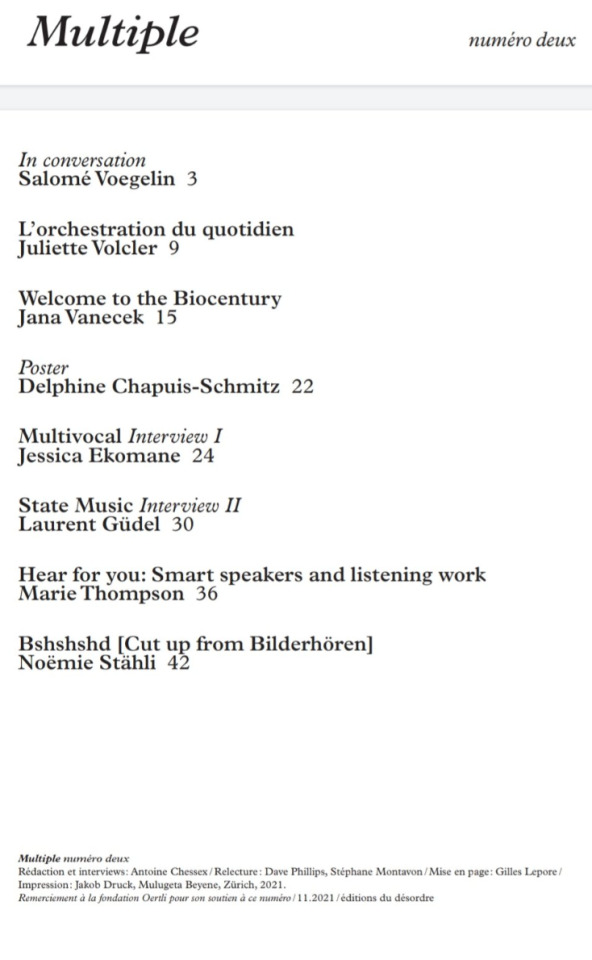

Multiple
I want to thank Antoine Chessex for inviting me to contribute to this new edition of Multiple. It was the first time I was invited to write long answers and try to summarize my intentions around the State Music project I've been working on since 2018. I also encourage you to read the contributions of comrade Juliette Volcler (who we invited to the Lokal-Int) but also those of Salomé Voegelin, Marie Thompson, Delphine Chapuis-Schmitz, Jessika Ekomane, Jana Venecek and Noëmie Stähli.
Download the .pdf copy here
#large#antoine chessex#juliette volcler#Salomé Voegelin#Jessica Ekomane#Delphine Chapuis-Schmitz#Jana Vanecek#Marie Thompson#Noémie Stähli#multiple
0 notes
Photo





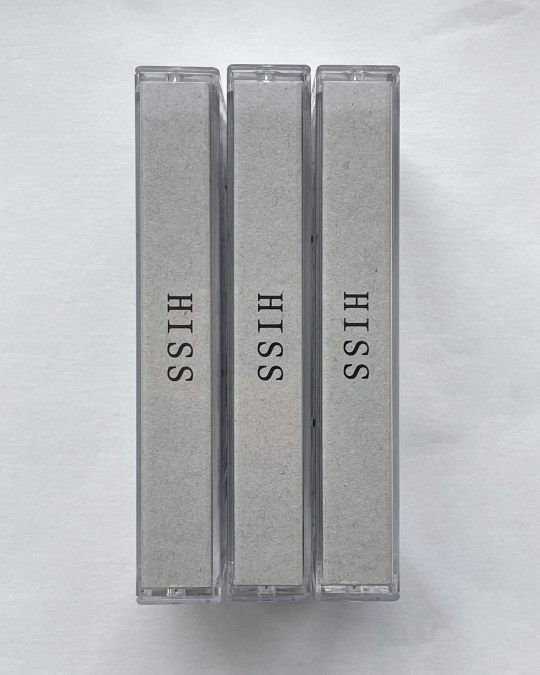
Hiss
Apian and Laurent Güdel released an audio piece on cassette.
Hiss is a sonic ethnography exploring listening practices in beekeeping. Made in collaboration with the beekeeper Hassan Souaf, the 29-minute piece navigates through the acoustic space of his apiary. Recorded near Inzerki, Morocco — home of the world’s largest migratory apiary — Hiss centres on Hassan’s modest congregation of bee organisms, hived in both traditional and modern beehives. Twenty-two years of practice has provided Hassan with listening abilities to analyse specific sonic cues, allowing him to monitor and predict bee behaviour. Building upon a conversation which discusses these skills, Hiss interweaves recordings of honeybees together with Laurent’s electronic music. The result momentarily unites an array of acoustic communities into a polyphonic interspecies composition.
Limited edition of 100 copies, and we’re selling them for 20€ + shipping (depending on the destination). The production price was exactly 15.58€ per tape – we got carried away with fancy printing and a dense leaflet, hence the expensive price for a tape. If you want a copy, just send us an email with your address to [email protected] Payment-wise, we only accept PayPal, or you can order via Laurent Güdel’s Bandcamp – which is easier. Otherwise, if you are in London or Bienne (CH) we can arrange a hand-to-hand exchange.
1 note
·
View note
Photo
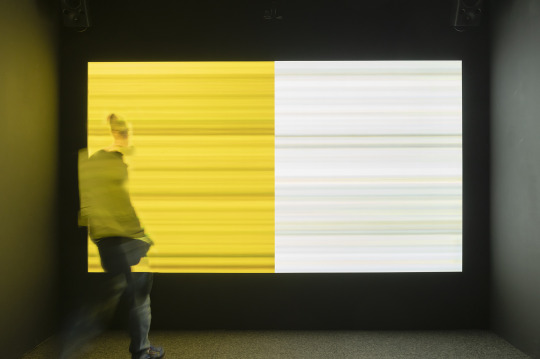

Over the Horizon
Over the Horizon is a sound and video installation. The recordings that can be heard come from an audio archive of signals compiled by radio amateurs from all over the world over the past decades. The content can be accessed at www.sigidwiki.com. I have contributed to this corpus with some signals I have created myself.
The title refers to a type of radar that can «hear» beyond the horizon. These types of electromagnetic waves pass through and around our bodies without us knowing it permanently. We are collectively immersed in the invisible world of radioelectric surveillance transmissions. Invisible, but not inaudible.
This work allows us to perceive these control technologies surrounding us. In this installation, one can hear hundreds of exchanges from military and civil aviation, air and sea communications, radar, satellite broadcasts, Morse coded diplomatic messages, voice scramblers, GPS positioning and timing utilities, frequency jamming and scientific research protocols.
I am also interested in these signals because they evoke the sounds of various electronic music. From the first compositions of the 1950s to the most contemporary glitches and noise music. Through electroacoustic composition, I shift the meaning of these signals and question the limits between signal and noise as well as between art and technology. Since these sounds are messages that we cannot decode, they escape us.
By putting them in the context of art, sound and music, we can experience them in a more political perspective. History of audio technologies, sound studies and critical listening are still underused to address our relationship to reality. Whether we think of it in a political and social way or in a more sensory, abstract and poetic manner.
Exhibition view: HEK (Haus der Elektronischen Künste) - Schweizer Medien Kunst award 2021
0 notes
Photo
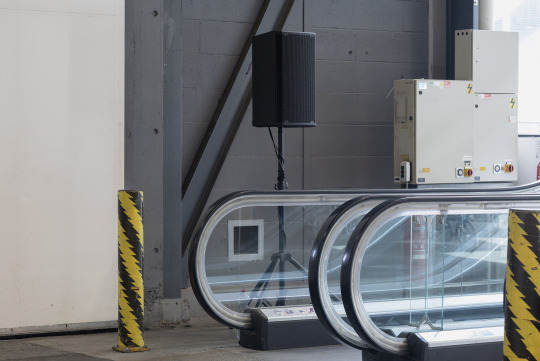
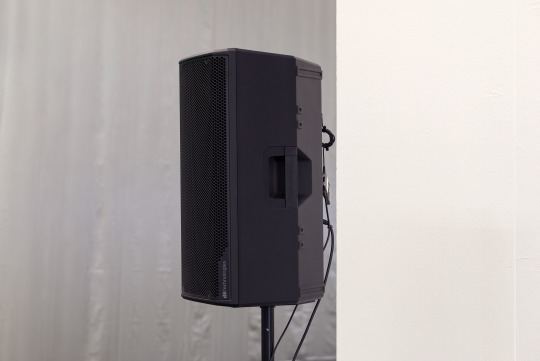

Unknown Artist
On receiving four cheap digital recorders that I had ordered, I discovered that one of them contained a recording of more than 18 hours of muffled voices and indistinct sounds, as well as artefacts due to digital compression. Clearly, an employee had pressed the “record” button before placing it in it’s box. The recording stopped once the battery had run down.
The audio file seems to come from a warehouse in China, but the location of the recording site has not been precisely identified. Aoli Technology, the company that manufactures the devices, is based in Shenzhen, the global capital of electronic production. Listening closely, we can make out the sounds of barcode scanners, vehicle engines and other container doors. The duration of the recording shows that the activity in this warehouse never quite stops. Voices are rarely audible, but it is still possible to hear people talking in Bahasa, since many immigrants from Indonesia are apparently employed in this job.
This sound object represents a unique phonography of the inaudible functioning of global capitalism. It displaces our experience of listening by putting us in the position of the commodity itself.
Images: Guadalupe Ruiz
Exhibition view at Swiss Art Awards 2021
1 note
·
View note
Photo


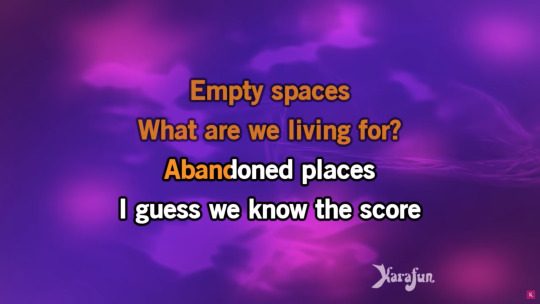
Empty spaces, what are we living for?
I was invited to present an installation visible from the street and through the large windows of the brand new Kunsthalle "Krone / Couronne" in Biel/Bienne. The idea was to find a way to exhibit a work despite the interdiction to attend cultural venues in the midst of the Covid19 pandemic.
This installation features a deserted party, an abandoned sound system, a stroboscope that no one has turned off, a smoking machine that coughs its volutes erratically and two immobile faceted balls.This karaoke is ridiculously stuck on the song "The show must go on" by Queen. The first sentence of this song - "Empty spaces, what are we living for?" - gives its name to this work. These empty cultural spaces resonate with our disbelief.
The installed elements are arranged and activated. They are waiting for the return of the public, reminding us of what is missing at the beginning of 2021: music, encounters, hugs and laughter.
2 notes
·
View notes
Photo


Unknown artist
In this installation, I present an audio document found by chance. After the delivery of an order of four digital recorders worth $24.99 each, I discovered that one of them contained three files forming a continuous recording of more than 18 hours of muffled voices, more or less indistinct noises and artifacts related to WAV compression. Evidently, a worker pressed the REC button before slipping the device into it’s protective plastic pocket and placing it in it’s box. The recording stopped when the battery ran out.
Upon examination, it would appear that this sound came from China. By listening carefully, you can hear some barcode scanners, vehicle engines, container locks and recognize the acoustic properties of a warehouse. Human voices are rare, but workers can sometimes be heard speaking Bahasa, the main Indonesian language. A significant number of Indonesian emigrants work in the transport industry in the Chines ports, as well as in the storage and shipping warehouses. Every other clues are leading to China and even Shenzhen. But who really knows?
This sound object constitutes a phonography of the inaudible machinery of international commercial exchanges. It shifts our listening position by forcing us adopt the perspective of the merchandise itself. The internal rhythm of neo-liberalism is thus made perceptible to the listener through a very long speculative listening experience.The amplification system installed in the art space attempts to recreate the acoustic space of the warehouse as it was captured by the recorder.
- Pictures by Lucas Dubuis. Exhibition views.
- La Cantonale Berne/Jura 2020-21, Centre Pasquart, Bienne.
1 note
·
View note
Photo
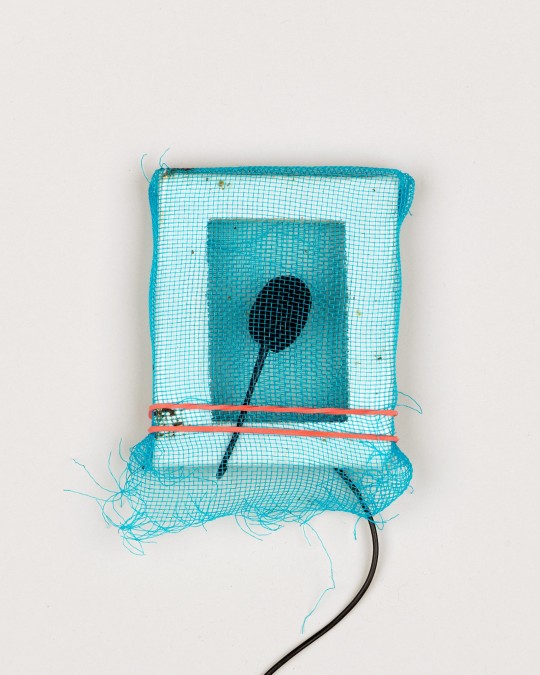
Shared Sensibilities
In 2019, the BBC working with the ICA (London) and the British Arts Council commissioned artists to produce multimedia artworks. Aladin Borioli was selected amongst other artists and made in collaboration with Laurent Güdel, Lars Chittka and Ellen Lapper a radio piece called Shared Sensiblities produced by Space Studio.
2 notes
·
View notes
Photo

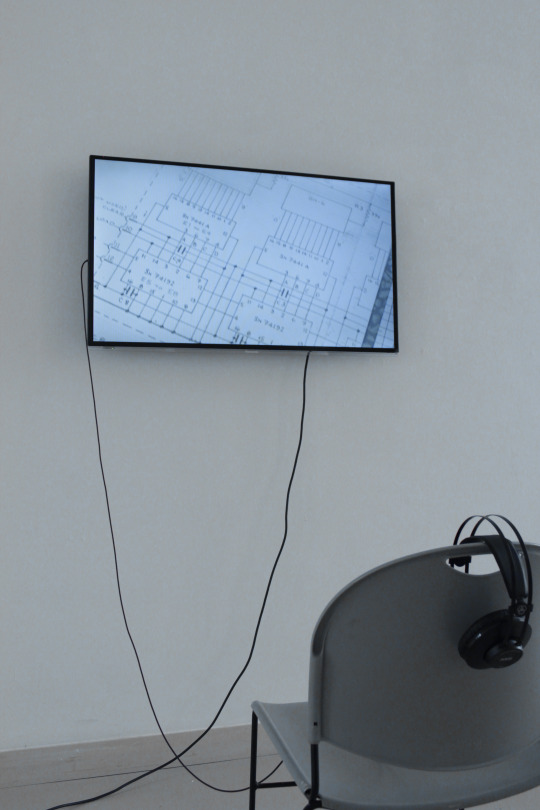
State music
Three multichannel compositions made at EMS in Stockholm, Radio Belgrade, KSYME Contemporary music research center in Athens. Also presented a single channel video titled “The history of electronic music is also the history of radio”. It’s an interview of Ksenija Stevanović, musicologist a assistant director on the cultural program of Radio Beograd.
- Pictures by Laurent Güdel. Exhibition views. Solo show.
- 8.3.2020 to 14.06.2020
- EAC - Espace d’Art Contemporain, Les Halles. Porrentruy. CH.
#large#state music#Electroacoustic#musique concrete#synthi100#buchla#serge modular#sound art#reserach#sound studies#EAC les halles
2 notes
·
View notes
Photo
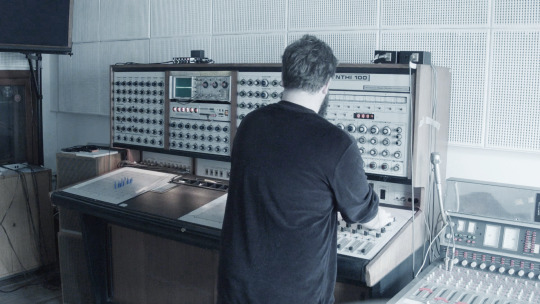




The history of electronic music is also the history of radio
Stills from a video shot at the Elektronski Studio of Radio Beograd in 2019. This video was presented during the exhibition State Music at EAC - Espace d’Art Contemporain Les Halles in Porrentruy.
1 note
·
View note
Photo
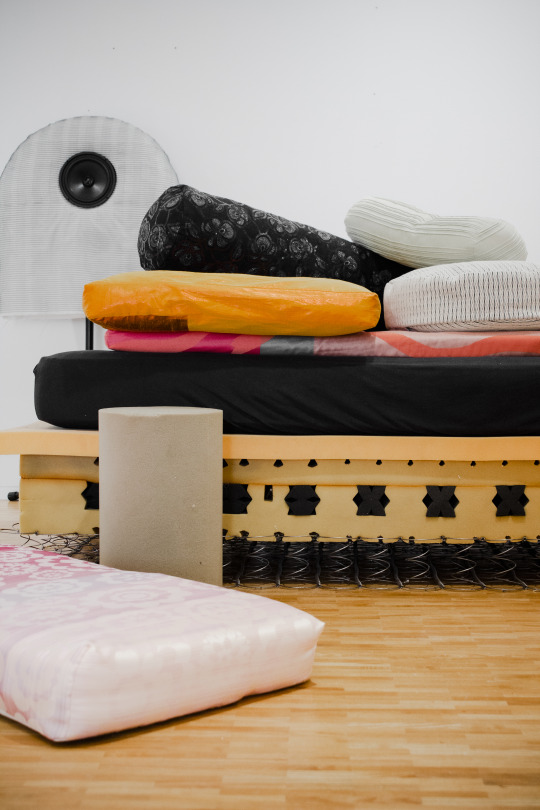
Relax
"Relax" is an installation created as part of the exhibition "Bilingualism does not exist" organized at the NMB, Museum of History, Art and Archaeology in Biel in 2019. The NMB asked me to reflect on the diversity of languages in the context of a bilingual city like Biel.
This piece is inspired by a radio model called Relax created by the company Biennophone. This radio was created in the 70s, and its originality lies in the fact that it was integrated into a cushion. This model was mainly intended for hospitals in the region. The brand Biennophone is part of the regional technical heritage.
In collaboration with the textile designer Barbara Kurth, we reinterpreted this device and created a bed on which the public could lie down and listen to about thirty lullabies recorded by me and sung by inhabitants living in Biel and of various origins. Lullabies are a way of transmitting a language to a child and contribute to linguistic diversity. Especially for people in exile or immigrants.
0 notes
Photo






State music
Solo exhibition at Lokal-Int in Biel/Bienne.
#state music#acousmatic#musique concrete#media art#sound art#sound installation#seashell#pierre schaeffer#electroacoustic#grm#lokal-int#biel#bienne#ems stockholm#buchla#serge#modular synth#power#economy#funding#acousmonium#themissingcomputer#large
6 notes
·
View notes